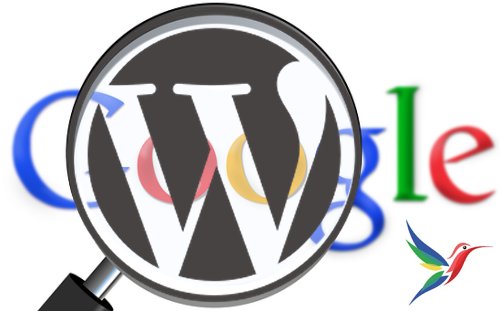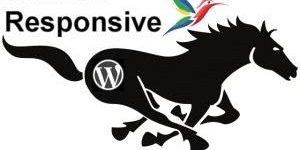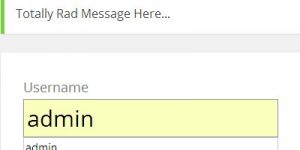Comment on WordPress SEO Theme Developer by SEO Dave.

If you view source of any of the Stallion layouts (including the new ones for Stallion 6.1) they all use the same basic HTML code layout which is built with SEO in mind. What you see on the page right now is NOT what you see when you view source.
In a browser the layout is:
Title of site
Description of site (this can be moved to the footer)
Header image (which is a background image, CSS no SEO value either way)
Search form (can be turned off)
Header Navigation Menu
Ad area if you use it
Rotating banner images (which is a background image, CSS no SEO value either way)
Left Sidebar
Main content + comments
Right sidebar
Bottom footer sidebars
Ad area if you use it
Footer
View source and the layout is different.
Title of site
Description of site (this can be moved to the footer)
Header image (which is a background image, CSS no SEO value either way)
Ad area if you use it
Rotating banner images (which is a background image, CSS no SEO value either way)
Main content + comments
Right sidebar (yes the right sidebar is higher in the code than the left sidebar : using some funky CSS coding :-))
Left Sidebar
Bottom footer sidebars
Ad area if you use it
Footer
Header Navigation Menu
Search form (can be turned off)
Many SEO experts believe the order of content code wise is important SEO wise (really difficult to test, I’ve not been able to confirm it) and that main content should be as close to the top of the content code wise as possible.
You can see from the view source layout it’s almost perfect. The title of the site is important to the home page (it’s in a H1 header) but not so important for WordPress posts and static pages (the title lacks an H1 header on posts, pages, categories, tags…, so just a basic text link : one basic text link won’t do much SEO wise).
So above the main content is the sites title (one text link) the blog description (which can be moved to the footer code wise) a CSS based header image (it’s ignored by Google etc…) an optional ad area, CSS based rotating banners (ignored by Google etc…) then the main content starting with a H1 header with the title of the post etc…
Below the main content is all the navigation links, so 95% of the top of the code is unique main content, couldn’t get it much better SEO wise.
With the new sidebar layouts the code isn’t changed, it’s all CSS changes that have no SEO impact either way. So SEO wise doesn’t matter which of the sidebar layouts you use, they all look the same when you view source (what Google sees).
Regarding ads above the fold. Google can’t automatically determine where an ad unit is just by looking at what we see in a browser window. Code wise the default AdSense ad unit layout is:
Main content ad unit.
Main content.
Bottom content ad unit.
Sidebar content ad unit.
If you place one of the ad units in the header widget that couldn’t be more above the fold, but code wise it’s in the footer code right at the bottom.
If Google could guess the location of an ad based on the code of a typical post running Stallion it would find only one ad unit above the fold (the main one), the rest are way down code wise.
There’s no evidence having ads above the fold results in decreased rankings. Google even states on their blog they do not take AdSense or AdWords into account and I believe them.
What they do take into account is low quality sites, so if a site is filled with dozens of ads with little content I could see them taking this into account. They wouldn’t even need to determine an ad is an ad, think about all the off site HTML calls made if you used Stallion and had AdSense, Chitika, Clickbank and Infolinks/Kontera running at the same time (was never my intention to create a theme where users would turn them all on!). This sort of excessive ad setup will slow the loading of a site down, so a simple comparison of number of off site calls to external javascript (how main ad networks work) to the amount of text based content could be a way to determine quality.
This is just speculation, I’ve tested popular sites with and without ads running and see no major difference traffic wise, never tested running 4 ad networks which could have HTML calls to 20 external javascripts on the same site mind you.
My advice is aim for one main ad network, I use them in this order of preference:
AdSense
Chitika
Clickbank
I generally wouldn’t use two main ad networks on the same site because of all the calls to external scripts (slows a site down). My ideal setup is AdSense only with 3 content ad units, this is a compromise between making money and not irritating visitors with loads of ads. As you’ve discovered it’s that main content ad unit that makes most money.
David


More Comments by SEO Dave
Premium WordPress Theme Developer
Premium WordPress Themes
Stallion WordPress SEO Theme v7 sales have taken a nose dive, looks like there’s not a big market for WordPress SEO Themes that cost a reasonable amount of money, so dropped Stallion version 7 to $40 see if it makes …
Continue Reading WordPress SEO Plugin Developer
Premium WordPress Theme Developer
WordPress Theme Future Development
Stallion bugs first :-)
Google Translation Widget : well spotted (I missed that one), looks like the Google translation CSS file (hosted by Google) is overriding the Stallion CSS code for the gradients versions, will see if I can find a …
Continue Reading WordPress SEO Plugin Developer
Premium WordPress Theme Developer
AdSense Ads Above the Fold and Google Rankings
If Google do take AdSense code placement into account with an aim to downgrading sites with AdSense code above the fold the good news is the Stallion code is designed to push the content high in the code and as …
Continue Reading WordPress SEO Plugin Developer
Premium WordPress Theme Developer
Updating a WordPress Theme with Customized Files
When you update a theme (or plugin) using the built in WordPress updater it deletes the current theme folder and replaces it with the new files, so all customizations are lost.
That’s how WordPress works with all themes and plugins, if …
Continue Reading WordPress SEO Plugin Developer
Premium WordPress Theme Developer
New WordPress Theme Features
Added 1 and 2 above for the next update, made quite a few changes for the next update so warrants a 6.2 version number :-)
Also added a few new WordPress page templates and modified some of the current ones.
There’s a …
Continue Reading WordPress SEO Plugin Developer